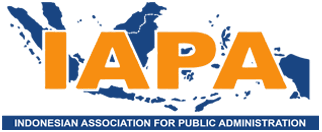The Concepts of Forest Governance Practices at Site Level in Indonesia
DOI:
https://doi.org/10.21776/ub.jpas.2018.003.01.1Keywords:
Forest governance, hutan tanaman rakyat, hutan desa, hutan kemasyarakatan, kemitraanAbstract
This paper aims to explore the concept of forest governance practices at site level in Indonesia. It carried out content analysis by analyzing governmental regulations and related case studies from various authors. Indonesia recognizes four kinds of forest governance at site level such as hutan tanaman rakyat, hutan desa, hutan kemasyarakatan and kemitraan. All forms need local community involvement. The former three have connection with government, meanwhile the latter involves forest-related license. Some studies show their positive impact not only for community livelihoods but also for forest ecosystem. However, the common problems emerged from these implementations are characterized by weak local capability and bureaucratic process.
References
Ansell, C. and Gash, A. (2007). Collaborative Governance in Theory and Practice. Journal of Public Administration Research and Theory, 18, 543-571.
Baumann, P. (1998). The Persistence of Populism in Indian Forest Policy. The Journal of Peasant Studies, 25, 96-123.
Brown, H. C. P. and Lassoie, J. P. (2010). Institutional choice and local legitimacy in community-based forest management: lessons from Cameroon. Environmental Conservation, 37, 261-269.
Diniyati, D., Achmad, B. and Santoso, H. B. (2013). Analisis Finansial Agroforestry Sengon di Kabupaten Ciamis (Studi Kasus di Desa Ciomas Kecamatan Panjalu). Jurnal Penelitian Agroforestry, 1, 13–30.
Djamhuri, T. L. (2012). The effect of incentive structure to community participation in a social forestry program on state forest land in Blora District, Indonesia. Forest Policy and Economic, 25, 10–18.
Corbridge, S. and Jewitt, S. (1997). From forest struggles to forest citizens? Joint Forest Management in the unquiet woods of India's Jharkhand. Environment and Planning, 29, 2145–2164.
Fairholm, M. R. (2010). Why a Rational Move toward “Governance†may Destroy the Soul of Public Administration: Or Why Governance isn’t Concerned with Government Anymore. In T. Brandsen and M. Holzer. The Future of Governance. Selected Papers from the Fifth Transatlantic Dialogue on Public Administration. National Center for Public Performance (NCPP)
FAO. (2012). Strengthening Effective Forest Governance Monitoring Practice. Rome: Food and Agriculture Organization of the United
Howlett, M and Ramesh, M. (2014). The Two Orders of Governance Failure: Design Mismatches and Policy Capacity Issues in Modern Governance. Policy and Society, 33, 317-327.
Indrajaya, Y., and Sudomo, A. (2013). Analisis Finansial Agroforestry Sengon dan Kapulaga di Desa Payungagung, Kecamatan Panumbangan, Ciamis. Jurnal Penelitian Agroforestry, 1, 123–132.
Krahmann, E. (2003). National, Regional, and Global Governance: One Phenomenon or Many? Global Governance, 9, 323-346.
Kubo, H. (2008). Diffusion of Policy Discourse into Rural Spheres Through Co-Management of State Forestlands: Two Cases from West Java, Indonesia. Environmental Management, 42, 80-92.
Kumar, S., Kant, S. and Amburgey, T. L. (2007). Public Agencies and Collaborative Management Approaches: Examining Resistance Among Administrative Professionals. Administration and Society, 39, 569-611.
Mulyadin, R. M., Surati, and Ariawan, K. (2016). Kajian Hutan Kemasyarakatan Sebagai Sumber Pendapatan: Kasus di Kabupaten Gunungkidul, Yogyakarta. Jurnal Penelitian Sosial dan Ekonomi Kehutanan, 13, 13–23.
Peters, B. G. and Pierre, J. (1998). Governance without Government?: Rethinking Public Administration. Journal of Public Administration Research and Theory, 8, 223-243.
Poudel, N. R., Fuwa, N., and Otsuka, K. (2014). The impacts of a community forestry program on forest conditions, management intensity and revenue generation in the Dang district of Nepal. Environment and Development Economics, 20, 259–298.
Ribot, J. C. (2004). Waiting for Democracy: The Politics of Choice in Natural Resource Decentralization. Washington D. C.: World Resources Institute.
Sattler, C., et al. (2015). Understanding governance structures in community management of ecosystems and natural resources: The Marujá case study in Brazil. Ecosystem Services. Available at https://www.infona.pl/resource/bwmeta1.element.elsevier-7c03eb34-3933-3b77-be46-b853a6be9fa7 [Accessed on 20 March 2017].
Sikor, T. (2006). Analyzing Community-based Forestry: Local, Political and Agrarian Perspectives. Forest Policy and Economic, 8, 339–349.
Steurer, R. (2013). Disentangling Governance: A Synoptic View of Regulation by Government, Business and Civil Society. Policy Science, 46, 387–410.
Subarudi. (2014). Analisis Kelayakan Sosial, Finansial dan Pasar Produk Hutan Tanaman Rakyat: Studi Kasus di Kabupaten Dompu, Nusa Tenggara Barat. Jurnal Penelitian Sosial dan Ekonomi Kehutanan, 11, 323 – 327.
Sujarwoto, S., Tampubolon, G., & Pierewan, A. C. (2017). Individual and Contextual Factors of Happiness and Life Satisfaction in a Low Middle Income Country. Applied Research in Quality of Life, 1-19.
Sujarwoto, S. (2017). Small family norms and family well-being in Indonesia, 2006–2014. Journal of biosocial science, 49(S1), S96-S115
Treib, O., Bahr, H., and Falkner, G. (2007). Modes of Governance: Towards a Conceptual Clarification. Journal of European Public Policy, 14, 1–20.
Warah, S. (2008). Participatory Management of Forests and Protected Areas: A Trainers’ Manual. Bangkok: Regional Community Forestry Training Center for Asia and the Pacific (RECOFTC).
World Bank. (2008). Forests sourcebook: Practical guidance for sustaining forests in development cooperation. Washington DC: World Bank.
World Bank. (2009). Roots for Good Forest Outcomes: An analytical Framework for Governance Reforms. Washington DC: World Bank.
Downloads
Published
Issue
Section
License
Copyright Statement
Authors who publish with JPAS agree to the following terms:
(1). Authors retain copyright and grant the journal right of first publication with the work simultaneously licensed under a Creative Commons Attribution License that allows others to share the work with an acknowledgement of the work's authorship and initial publication in this journal.
(2). Authors are able to enter into separate, additional contractual arrangements for the non-exclusive distribution of the journal's published version of the work (e.g., post it to an institutional repository or publish it in a book), with an acknowledgement of its initial publication in this journal.
(3). Authors are permitted and encouraged to post their work online (e.g., in institutional repositories or on their website) prior to and during the submission process, as it can lead to productive exchanges, as well as earlier and greater citation of published work (See The Effect of Open Access).
Permissions and reuse
For authors
Authors may use their own articles for the following non-commercial purposes without asking our permission (and subject only to acknowledging first publication in JPAS and giving a full reference or web link, as appropriate).
(1). Posting a pdf of their own article on their own personal or institutional website, for which no charge for access is made.
(2). Making a reasonable number of copies for personal or non commercial professional use.
This includes the contributors own teaching purposes.
(1). Republishing part or all of the article in a book or other publication edited by the author (except for multiple contributions in the same book or publication, for which permission needs to be sought.
(2). Using individual figures or tables or extracts of text (up to 300 words) in other publications published by a third party.
(3). Using the article in a course pack or compilation (whether paper or electronic) in the authors institution. This does not apply if a commercial charge is made for the compilation or training programme.
For third parties
All articles published by JPAS are published by default as open access.















